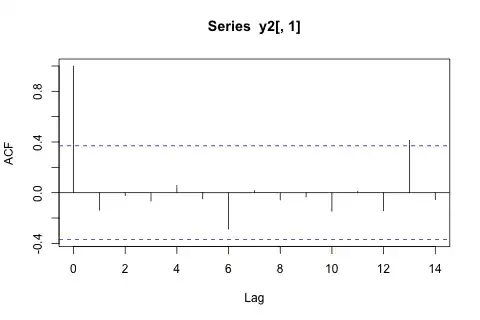How do I find the 95% limits of the population distribution of a normally distributed parameter? I've taken the mean and SD from 10 different readings of the parameter. Will the 95% limits be mean +/-1.96SD as per the normal distribution; or mean +/-2.262SD as per the t distribution as it is a small sample?
- 281,159
- 54
- 637
- 1,101
- 11
- 2
-
You need to specify one more quantity: with how much confidence do you want to estimate these limits? The result is called a [tag:tolerance-interval]. – whuber Nov 22 '18 at 15:11
-
95% confidence will be good; but I'm confused according to which distribution should I calculate the upper and lower limits 95% limits from the mean of the sample that I've taken? – boredgames Nov 22 '18 at 15:26
-
Neither. The computation is based on the Normal assumption but it does not directly involve either the Normal distribution or the Student t distribution: the limits are found in a different way. See https://stats.stackexchange.com/questions/26702 for instance. – whuber Nov 22 '18 at 15:34
1 Answers
Suppose $X_1, X_2, \dots, X_{10}$ is a random sample from a normal distribution with unknown mean $\mu$ and unknown SD $\sigma.$
CI for normal $\sigma$ with $\mu$ unknown. Then the 'pivotal quantity' $Q = \frac{9\,S^2}{\sigma^2} \sim \mathsf{Chisq}(df = 9),$ where $S^2$ is the sample variance. Thus $$P(2.700 < Q < 19.023) = P\left(\frac{9\,S^2}{19.023} < \sigma^2 < \frac{9\,S^2}{2.700}\right) = 0.95,$$ where percentage points .025 and .975 of the chi-squared distribution can be found from printed tables or using software (such as R below).
Thus a 95% CI for $\sigma^2$ is of the form $\left(\frac{9\,S^2}{19.023},\; \frac{9\,S^2}{2.700}\right)$ and a 95% CI for $\sigma$ can be found by taking square roots of the endpoints of the CI for $\sigma^2.$
qchisq(c(.025, .975), 9)
[1] 2.700389 19.022768
Numerical example. For example, the R code below generates $n = 10$ observations from $\mathsf{Norm}(\mu=100,\, \sigma=20),$ for which the sample SD is $S = 24.51.$ A 95% CI for $\sigma$ is $(16.86,\, 44.75).$ In this example where $\sigma$ is known because we simulated the data, we can see that the CI includes the true value $\sigma = 20.$
set.seed(1122); n = 10; mu = 100; sig = 20
x = rnorm(n, mu, sig); s = sd(x); s
[1] 24.51219
CI = sqrt((n-1)*s^2/qchisq(c(.975,.025), n-1)); CI[1]
[1] 16.86035 44.74971
Distribution of $Q.$ The relationship $Q = \frac{(n-1)S^2}{\sigma^2} \sim \mathsf{Chisq}(\text{df} = n-1)$ can be proved using moment generating functions or by a multi-dimensional orthogonal transformation. The simulation below, illustrates this relationship for the parameter values used in this Answer.
set.seed(1118); m=10^5; n = 10; mu = 100; sig = 20
q = replicate(m, (n-1)*sd(rnorm(n, mu, sig))^2/sig^2)
mean(q); var(q)
[1] 9.000164 # aprx E(Q) = 9
[1] 17.9578 # aprx Var(Q) = 18
HDR = "Simulated Dist'n of Q with Density of CHISQ(9)"
hist(q, prob=T, br=30, col="skyblue2", xlab="Q", main=HDR)
curve(dchisq(x, n-1), 0, max(q), add=T, lwd=2, col="red")
- 47,896
- 2
- 28
- 76
-
I can't quite grasp how this answers the question: I am missing the part that accounts for the uncertainty in $\mu.$ Where do you handle that? – whuber Nov 23 '18 at 16:25
-
@whuber. Good points. I composed this answer before I saw your comment about tolerance intervals. Initially, I thought OP was looking for CIs for both $\mu$ and $\sigma$ and didn't know how to do the latter. In retrospect, I think it may be best to take down this Answer to avoid confusion. Please do so, if you wish. – BruceET Nov 23 '18 at 19:00
-
I suspect you might already be close to an answer, because tolerance limits are confidence limits for linear combinations of $\mu$ and $\sigma.$ – whuber Nov 23 '18 at 19:06
-
Thanks. I will try to sharpen my understanding of tolerance intervals. – BruceET Nov 23 '18 at 19:14
